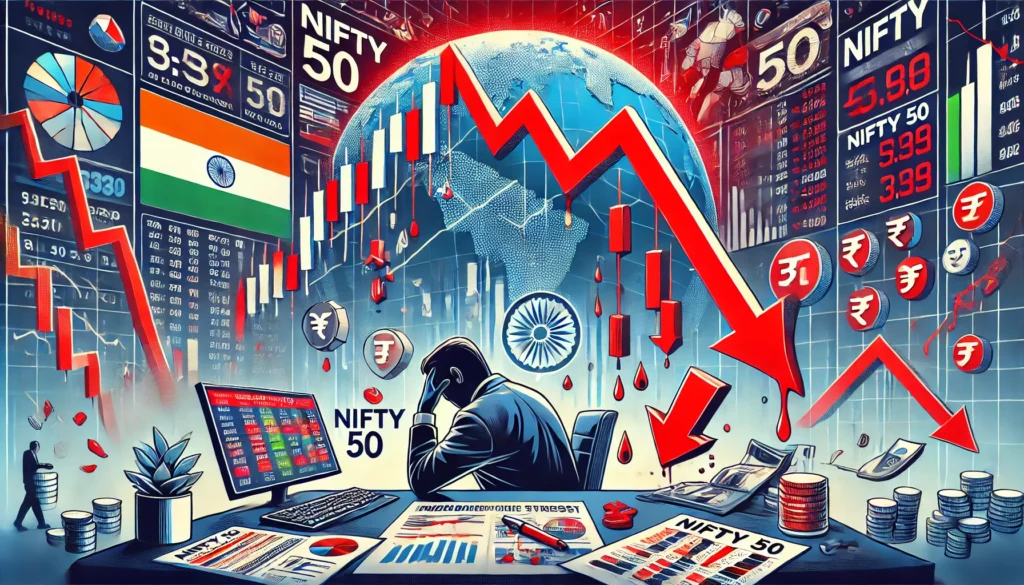Last week, the United States took one of the most extreme trade policy shifts by imposing wide-ranging tariffs on several goods from different countries. The announcement not only heightened geopolitical tensions but also severely impacted worldwide stock exchanges. Major indexes declined in value, compounding fears of a trade war, economic stagnancy, and persistent inflationary pressures as $9 trillion in market value evaporated during the freefall.
As the stock markets responded with unprecedented volatility, here’s a detailed account of which countries were impacted, how they responded, and why the markets reacted with such intensity.
What Did the U.S. Announce?
As of April 5, 2025, the U.S. government placed a 10% baseline tariff on almost all imported goods. This was not a selective imposition; it was a blanket tariff that affected allies and foes equally.
Key Tariff Highlights:
- A 10% baseline tariff on all imports is effective immediately.
- 34% tariffs on Chinese goods, especially electronics, textiles, auto parts, and consumer goods—effective from April 9.
- 50% tariffs on goods from Lesotho, Cambodia, and Madagascar, which are considered smaller export-driven nations. – Tariffs on EU and Latin American agricultural products, including but not limited to wine, cheese, and meat.
As the statement from the officials suggests, the goal is to support local industries by increasing domestic trade while also attempting to reduce the overall trade deficit. Economists, however, seem to believe this is simply a drastic form of economic protectionism that may lead to significant negative consequences.
Country-Wise Impact and Reactions
China
China was hit the hardest. In retaliation, it imposed a 34% tariff on U.S. exports such as soybeans, aerospace parts, and industrial machinery. Beijing labeled the U.S. action “economic bullying” and submitted a complaint to the World Trade Organization (WTO).
Ministry of Commerce of the People’s Republic of China:
“The United States has unilaterally disrupted global supply chains. We will undertake the actions necessary to protect our economic interests.”
European Union
The EU criticized America, voicing their “deep regret” whilst warning that mirror tariffs could be placed on American automobiles and technologies if diplomatic parlance failed. Germany, France, and Italy condemned the US together as they viewed the Americans as abandoning their free market system.
India
India might qualify for the most recent round of tariffs in the sixth and eighth categories, but with these sanctions not immediately applied, it could ease the burden on the export sectors like textiles, pharmaceuticals, and gems. Reportedly, the Indian government is looking into preferential trade arrangements with the EU and ASEAN to turn the tables.
Smaller Nations
Countries like Lesotho, Cambodia, and Madagascar, which are classified as developing countries and heavily depend on US apparel exports, now face serious economic concerns. These nations could endure tough consequences due to closed factories, loss of employment, and potential social instability stemming from the worsened economy.
What Caused the Collapse of Global Markets?
Sudden Electric Panic and Volatility
Markets do not like surprises. In particular, investors did not have time to reallocate or hedge their positions in advance of the tariff rollout, which was both broad and sudden. This resulted in panic selling on major global indices.
Downgrade the Earning Expectations
Analysts expect that due to the tariffs, the cost of importing components would increase. Adding to this expectation of profit diminution, analysts also increased downgrade earning expectations for major corporations across the technology, automotive, and consumer goods industries.
Global Economic Downgrade Fears
This is strikingly similar to the early phases of the financial crisis back in 2008. A potential trade collapse, alongside retaliatory actions, considerably increases the chances of a synchronized global economic slowdown.
The $9 Trillion Market Wipeout
Breakdown by Region:
U.S. Markets: The S&P 500, Nasdaq, and Dow Jones Industrial Average suffered significant losses. Value destruction surpassed $5.4 trillion within two trading sessions.
Asia-Pacific: Japan’s Nikkei 225 as well as Hong Kong’s Hang Seng Index both plunged more than 7%. China’s CSI 300 had its worst single-day loss ever since the COVID-19 lockdowns.
Europe: Multi-year lows were registered for the FTSE 100, DAX, and CAC 40.
Emerging Markets: Countries that depend heavily on US trade experienced significant capital flight and currency devaluation.
What Lies Ahead?
Short-Term:
- Expect a tumultuous earnings season where companies are likely to revise their outlooks and goals for the year.
- Potential central bank coordinated interest rate cuts or quantitative easing (QE) could stem the tide.
- Increased scrutiny and pressure on the U.S. government to reverse or reconsider its tariffs will arise politically.
Long-Term:
- Shifts in regional supply chains as nations seek to lessen reliance on the U.S. may emerge.
- New regional trade partnerships will form.
- Domestic manufacturing will be shoved forward in both mature and developing nations’ economies sooner than expected.
Conclusion
The April 2025 US tariff blitz will arguably stand out as one of the most remarkable milestones of the global economy. While aimed at stimulating local production, it has—at least in the immediate sense—created pandemonium in the capital markets, strained diplomatic relations, and revealed the brittle character of the heavily integrated world economy. The next few weeks will be critical as the developed world’s economy, along with the blended powers, needs to navigate through these turbulent waters. It is yet to be demonstrated whether there will be more adaptive capacity to absorb shocks to enhance future disruptions or increase the duration of instability.
Let us know your thoughts in the comments below.



